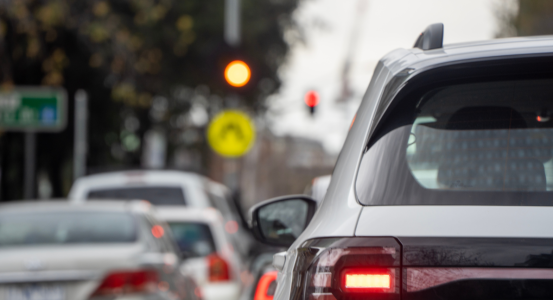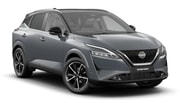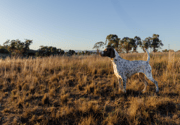Organisation introduces major overhaul to streamline the driver's licence conversion process
By
- Replies 27
Navigating the roads in Australia is about to become more complex for foreign drivers seeking to call this sunburnt country home.
New national guidelines that came into effect this week will significantly overhaul the driver's licence conversion process, impacting every Australian state and territory.
This change is not just a minor tweak; it's being hailed as the most substantial shift in the Recognised Country Scheme in two decades, and both locals and international residents need to be aware of it.
Austroads, the government-funded agency responsible for managing international licences on behalf of the states and territories, has introduced these changes to 'streamline conversions' from a select list of countries.
The aim is to ensure that drivers from overseas meet the high standards expected on Australian roads, and the new process reflects a commitment to a Safe System approach to road safety.
Previously, overseas drivers could navigate Australian roads with a valid licence from their home country.
However, those planning to live here permanently were categorised into two groups to convert their international licence to an Australian one.
The Recognised Country status included many Western countries such as the US, UK, France, Canada, and Italy, where motorists could fill in paperwork to make the switch.
The second category, the Experienced Driver Recognition Status, encompassed countries like South Korea, South Africa, Taiwan, and Poland.
But here's the kicker: this category will be no more from 30 April 2025.
This means licence holders from these countries will likely need additional training and testing to secure an Australian licence.
Geoff Allan, Austroads Chief Executive, has emphasised that the changes are designed to ensure a more rigorous assessment process and to address concerns such as identity theft and document fraud.
The new system will require applicant countries to confirm the validity and currency of their licences, adding an extra layer of security.
However, for overseas licence holders who only transition to an Australian licence after the Experienced Driver Recognition Scheme ends, further training and testing await.
The process for converting an overseas licence to an Australian one varies from state to state, and those affected are encouraged to visit the AustRoads website for specific information.
In most parts of Australia, a driver with a full licence from their home country can legally drive for up to three months after arrival—except in Victoria, where the period extends to six months.
New South Wales has already set a deadline for international drivers living permanently in the state to apply for local credentials.
The new laws, announced in March, aim to close a significant loophole that allowed international drivers to accumulate demerit points without facing the same consequences as local licence holders.
Two main changes affect drivers with overseas licences, so it's crucial for all parties involved to stay informed and prepared.
 Do you have a story tip or personal experience related to the changes in the new driver's licence? Feel free to share your thoughts in the comments below.
Do you have a story tip or personal experience related to the changes in the new driver's licence? Feel free to share your thoughts in the comments below.
New national guidelines that came into effect this week will significantly overhaul the driver's licence conversion process, impacting every Australian state and territory.
This change is not just a minor tweak; it's being hailed as the most substantial shift in the Recognised Country Scheme in two decades, and both locals and international residents need to be aware of it.
Austroads, the government-funded agency responsible for managing international licences on behalf of the states and territories, has introduced these changes to 'streamline conversions' from a select list of countries.
The aim is to ensure that drivers from overseas meet the high standards expected on Australian roads, and the new process reflects a commitment to a Safe System approach to road safety.
Previously, overseas drivers could navigate Australian roads with a valid licence from their home country.
However, those planning to live here permanently were categorised into two groups to convert their international licence to an Australian one.
The Recognised Country status included many Western countries such as the US, UK, France, Canada, and Italy, where motorists could fill in paperwork to make the switch.
The second category, the Experienced Driver Recognition Status, encompassed countries like South Korea, South Africa, Taiwan, and Poland.
But here's the kicker: this category will be no more from 30 April 2025.
This means licence holders from these countries will likely need additional training and testing to secure an Australian licence.
Geoff Allan, Austroads Chief Executive, has emphasised that the changes are designed to ensure a more rigorous assessment process and to address concerns such as identity theft and document fraud.
The new system will require applicant countries to confirm the validity and currency of their licences, adding an extra layer of security.
However, for overseas licence holders who only transition to an Australian licence after the Experienced Driver Recognition Scheme ends, further training and testing await.
The process for converting an overseas licence to an Australian one varies from state to state, and those affected are encouraged to visit the AustRoads website for specific information.
In most parts of Australia, a driver with a full licence from their home country can legally drive for up to three months after arrival—except in Victoria, where the period extends to six months.
New South Wales has already set a deadline for international drivers living permanently in the state to apply for local credentials.
The new laws, announced in March, aim to close a significant loophole that allowed international drivers to accumulate demerit points without facing the same consequences as local licence holders.
Two main changes affect drivers with overseas licences, so it's crucial for all parties involved to stay informed and prepared.
Key Takeaways
- Foreign drivers seeking an Australian licence may face new training measures and tests under updated national guidelines.
- The changes are intended to streamline conversions and introduce strengthened assessment criteria for licence recognition.
- The Recognised Country status and Experienced Driver Recognition Status have different requirements for international drivers converting their licences.
- The Experienced Driver Recognition Status will be abolished from April 30, 2025, prompting drivers from those countries to undertake further training and testing.








